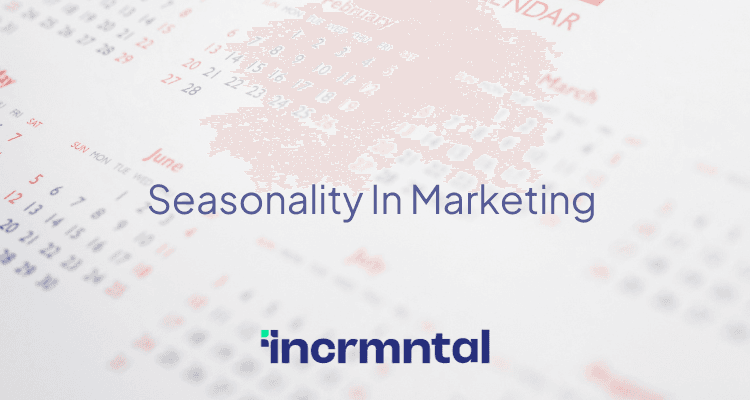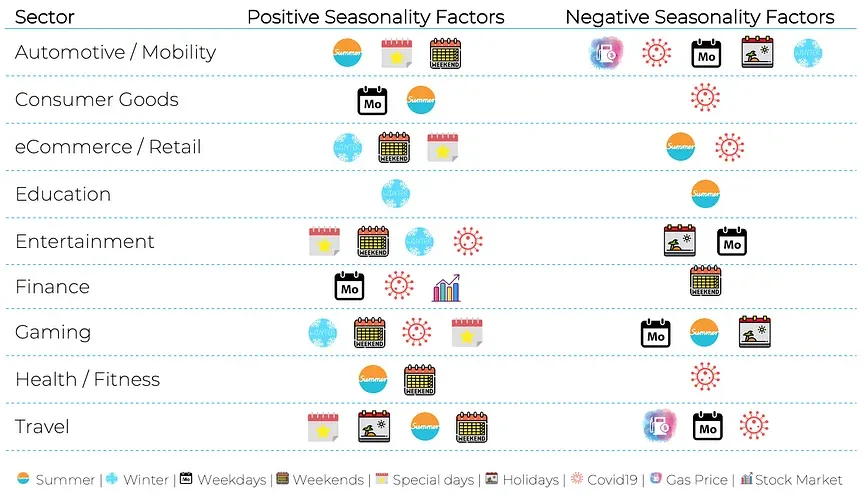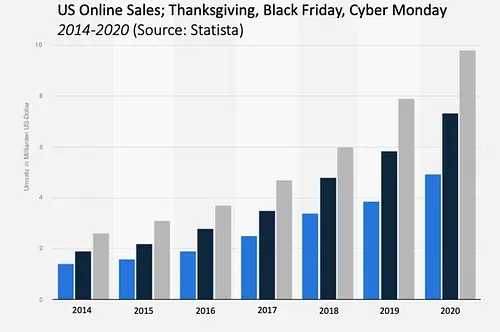Solutions
Teams
Built for your whole team.
Industries
Trusted by all verticals.
Mediums
Measure any type of ad spend
Platform
Use Cases
Many Possibilities. One Platform.
AI and Automation
The Always-on Incrementality Platform
Teams
Built for your whole team.
Industries
Trusted by all verticals.
Mediums
Measure any type of ad spend
Use Cases
Many Possibilities. One Platform.
AI and Automation
The Always-on Incrementality Platform

Seasonality is an elusive and vague term we often use in marketing. Seasonality allows us to explain why there are more sales in certain periods within the year, why weekends do better or worse in terms of performance.
We wrote this article analyzing multiple customer’s marketing performance during peak seasonality to answer the question: Should you spend MORE or should you spend LESS during peak seasonality?
We use the term seasonality relatively loosely to explain trends in KPIs (sales, installs, revenues, etc..) – but often, the term seasonality is used to describe consumer habits more than just “seasons” or special holidays or times of year
Companies experience multiple facets of seasonality across the year: Monthly seasonality (people play more games in winter than in summer), week day seasonality (people play more games in weekends than in week days) – but seasonality is also the term used to describe macro level influencers, such as the one that Chess.com and Chess games experienced when Netflix released “The Queen’s Gambit”, driving millions of people to download chess games, and go and buy chess boards.
Seasonality is an extremely powerful force in a company’s performance – and marketers struggle to differentiate how much of the success is coming through seasonality and how much (if any) is coming from marketing campaigns.
“Many marketers and especially analysts believe that creating a “ground truth experiment” can be achieved by stopping the paid marketing activities across a single advertising channel, or stopping all advertising across a specific country. This approach becomes more difficult the larger and thus fragmented the business is. And honestly – can you make sure the weather stays the same?”
Dr. Tim Wiegels, VP Data, FreeNow
Looking at the different sectors, seasonality components have an impact (negative or positive) over each sector

The following section of the article is a series of examples of measurements we ran (and anonymized!) to answer this question
Advertising during Mother's Day
Seasonality is an elusive and vague term we often use in marketing. Seasonality allows us to explain why there are more sales in certain periods within the year, why weekends do better or worse in terms of performance.
We wrote this article analyzing multiple customer’s marketing performance during peak seasonality to answer the question: Should you spend MORE or should you spend LESS during peak seasonality?
Looking at the different sectors, seasonality components have an impact (negative or positive) over each sector
Seasonality is an extremely powerful force in a company’s performance – and marketers struggle to differentiate how much of the success is coming through seasonality and how much (if any) is coming from marketing campaigns.
The following measurement results (from the INCRMNTAL platform) are two measurements made by a D2C / Retail Advertiser, Spending with Facebook around a major seasonality event – Mother’s Day.
Increasing the spend just before Mother’s day did lead to incremental sales and revenues. That said, this Advertisers’ ROAS target is 300%.
While the spend did help push up revenues – the additional spend was not meeting the customers’ goals.

The same advertiser increased spend across Facebook during the end of May, when there was no additional seasonality event acting as fuel to the fire.
Without any strong seasonality – Facebook’s spend yielded a return over ad spend of 490%

Leveraging a New Product Release
The following examples are showing measurements from a Consumer Goods Advertiser.
In the first measurement, we can see the results of a new product release. As you can see from the following measurement results – the new product yielded substantial incremental sales and revenues.

Interesting to note that during the new product release, the affiliation channel “spiked up” in terms of conversions – gaining conversions due to the new product release…
Scaling up ad spend on Facebook in parallel to this product release shows positive results, at a very good ROAS. Unlike the DTC Advertiser example, this advertiser enjoyed growth at a high ROAS, as their campaigns on Facebook were not advertising the new product.
By creating a lag between the launch of the new product and the advertising of the new product – this advertiser leveraged their existing user-base using their CRM marketing, rather than allow paid marketing to cannibalize the peak results coming due to the new product

(Here is an example of a Facebook measurement around a time where there was no strong seasonality event influencing sales)

Advertising during Black Friday
Black Friday (25th of November) and Cyber Monday (28th of November) represent the biggest shopping days in the US. Consumers spend has risen to +$14bn across the Thanksgiving weekend shopping spree. None of this is news.
Advertisers have followed this trend with their advertising budgets, with some brands holding up to 40% of their annual budgets throughout the year, only to spend those in an advertising craze during the holiday season.

The following measurement is showing the incremental results of Black Friday as a special day. It’s very clear to see that Black Friday as a shopping holiday yields a substantial amount of incremental sales and revenues.
But this measurement is also showing that several of the advertising channels used by this Advertiser “enjoyed” additional sales and revenues attributed to them. These additional sales and revenues are the result of Black Friday sales, rather than a sudden improvement in the results obtained by the campaigns.

This example, representing multiple similar measurements across various advertisers is showing a consistent outcome: The incremental value of advertising dollars spent during the holiday season is lower than the incremental value during normal seasonality.
To repeat and clarify this (likely controversial) statement:
Advertising during the holidays peak seasonality is not producing incremental results.
In theory – Advertisers are better off limiting their advertising budgets, enjoying the incremental sales and revenues that come with the period.
With that said – very few advertisers would be willing to test this theory – as while the incremental value of advertising during peak seasonality is not high – Limiting or completely cutting advertising spend during the holiday season may be decremental to your sales and revenues.
Decremental results are a zero sum game. These are the results coming from advertising activities that are not creating incremental value, where cutting those activities would potentially cause you to lose value.
Another very good reason why most marketers would not test out this theory is habit, and a bit of job security. Companies have been upping their Q4/Holidays spending for the past +100 years. To be the one going against stream, challenging your company’s CFO and CEO may be an extremely undesirable task to handle.
Even if your sales increase from $1M to $10M (without any additional ad spend), you’ll may be challenged with “our sales could have been $20M if you would advertise!”
If you want to learn more about measuring for incrementality during peak seasonality – feel free to contact us or schedule a demo.

Maor is the CEO & Co-Founder at INCRMNTAL. With over 20 years of experience in the adtech and marketing technology space, Maor is well known as a thought leader in the areas of marketing measurement. Previously acting as Managing Director International at inneractive (acquired by Fyber), and as CEO at Applift (acquired by MGI/Verve Group)